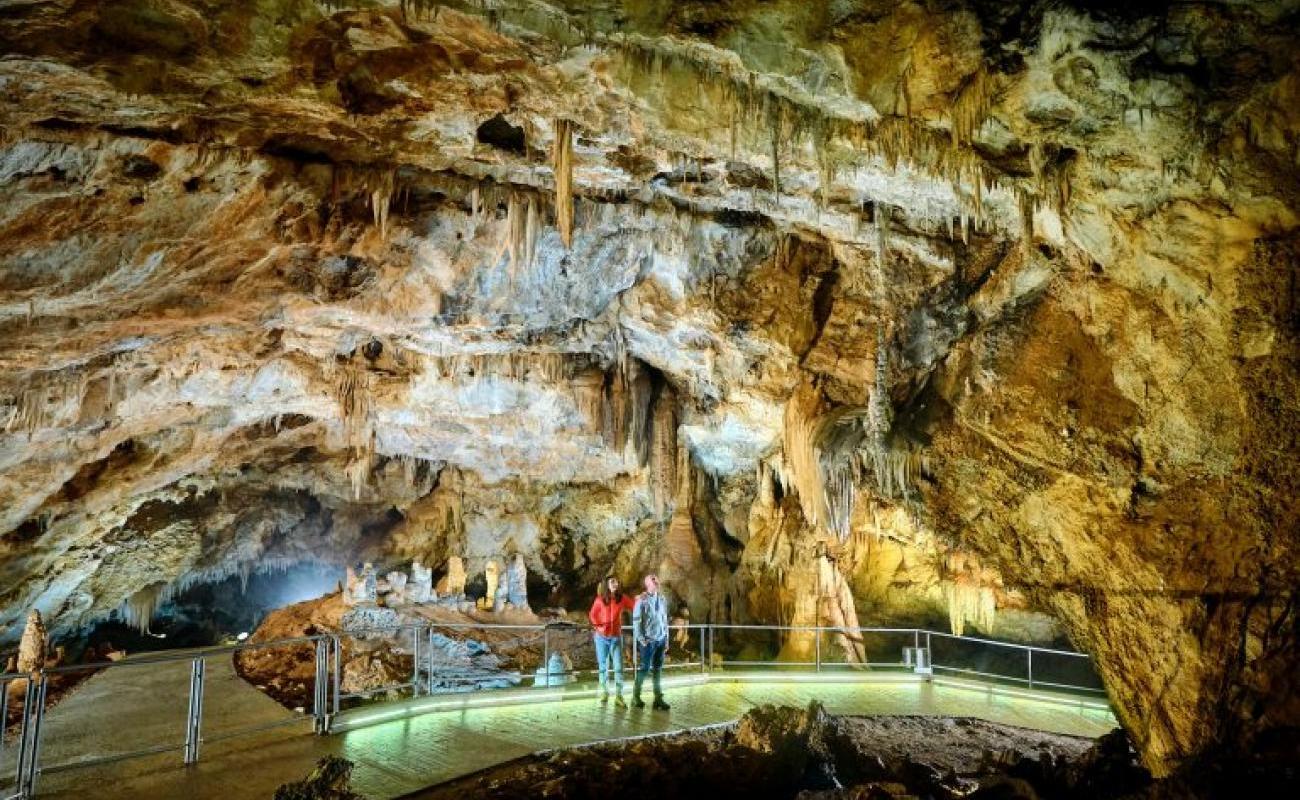Lipa Cave, a must-see attraction on Montenegro’s tourist map with support of EU funds

Located in the village of Dobrsko Selo, near Cetinje, lies one of the most famous speleological attractions in Montenegro – Lipa Cave. Ever since its discovery in the mid-19th century, this unique site has captured the attention of many, from the Petrović dynasty to explorers, speleologists, and adventurers.
It gained full recognition in 2015 when, through a public-private partnership, it was adapted and opened to visitors, offering exciting tours through the vast expanse of cave decorations – stalagmites and stalactites. Since then, Lipa Cave has attracted thousands of visitors every year, with continuous improvements to its offer. In this endeavour, it has received significant support through the pre-accession funds from the European Union.
With the aim of making Lipa Cave part of the cave tourism brand within the Adriatic-Ionian region, the tourism company managing this site has connected with partners from the mentioned area to enhance existing products and develop new ones based on the natural and architectural heritage found in caves. This project is called Adriaticaves and is supported through the transnational programme Interreg ADRION.
In addition to Lipa Cave, the Adriaticaves project aimed to improve the tourism offering in other well-known speleological areas in the Adriatic-Ionian region: Majella National Park in central Apennines and the Romane Caves in Italy, the protected landscape of Bijambare on the slopes of Canton Sarajevo in Bosnia and Herzegovina, Velebit Nature Park – the largest and most complex protected area in Croatia, as well as the Kađenica and Turčinovac caves between the steep slopes of Ovčar and Kablar in the area of the city of Čačak in Serbia, and the Dhenve, Moho, Perkali, and Arapi caves in the Albanian part of the Dinaric Alps.
By participating in this project, the Lipa Cave team had the opportunity to exchange best practices with partners by creating a joint network of caves in the Adriatic-Ionian region, receiving over €172,000 in non-refundable EU funds.
"Although TC Lipa Cave was very young at the time it became part of the Adriaticaves project, we are proud that we managed to improve the tourist offer of our site in a short period. Through knowledge sharing with our partners, we realised the importance of standardising the tourism services we provide,” explains Milena Raičević, Director of TC Lipa Cave, for Eurokaz.
As she points out, the greatest value of this project is the opportunity to educate guides and speleo-guides.
“We succeeded in improving our tourism offering through staff training because they are the ones directly communicating with visitors. Thanks to networking with partners, many employees improved their knowledge of the Italian language during the project’s duration,” says Raičević, adding that they, together with partners, have also created a training manual for guides.
In addition to staff training, a series of activities aimed at improving the tourism offering of Lipa Cave were implemented within the project. Among other things, an intensive marketing campaign was conducted, contributing to Lipa Cave becoming an essential place on the tourist map of Cetinje and Montenegro. In addition to the campaign, the promotion was boosted with the brochure “From Cave to Cave,” presenting all the cave attractions covered by this project.
Raičević notes that they have been experiencing a constant growth in the number of visitors year after year, especially during and after the implementation of project activities.
“Lipa Cave consistently receives positive reviews on international portals such as TripAdvisor. The satisfaction expressed by visitors has placed our site on the list of must-see places in our country. The successful implementation of the Adriaticaves project has played a significant role in this,” she adds.
During the implementation of the project, partners signed the Charter of Caves to ensure the sustainable use of caves, the preservation of natural and historical heritage within them, and to encourage visits of high educational and cultural value.
An important segment of the Adriaticaves project was the activities related to monitoring the state of cave sediments and decorations. For this purpose, within the project, speleological research was conducted on stalactites, stalagmites, cave columns, and other elements formed by the deposition of crystalline calcium carbonate. Additionally, measurements of temperature, humidity, and Radon concentrations within Lipa Cave were conducted as well.
Thanks to the successful results, the Adriaticaves project received its continuation – Adriaticaves Plus, also supported through the Interreg Adrion programme. As part of the project’s continuation, a 3D reconstruction of the Lipa Cave site was created as a tool to overcome travel and mobility restrictions, based on experiences gained during the COVID-19 pandemic.
For the Lipa Cave team, the Adriaticaves project brought an extraordinary opportunity to exchange experiences with cave and speleological heritage operators in other countries of the Adriatic-Ionian region.
“Our company is naturally inclined to operate in the international market. This brings many challenges, some of which we have also experienced during the pandemic. However, through cooperation with our project partners, we realised that borders truly do not exist, even in years when it seemed impossible. Besides sharing knowledge and experiences, we have come to understand that the challenges we face are universal, and solutions are often similar,” says Raičević.
As she emphasises, the difficulties faced by cave operators in the Adriatic-Ionian region are universal, and the solutions are often alike.
“The subjective impression is that, through this project, we have gained momentum even for what may have seemed impossible on both our small and global markets. It is only an incentive for us to develop ideas for the further development of speleological tourism, a completely new branch in our country,” concludes Raičević.
